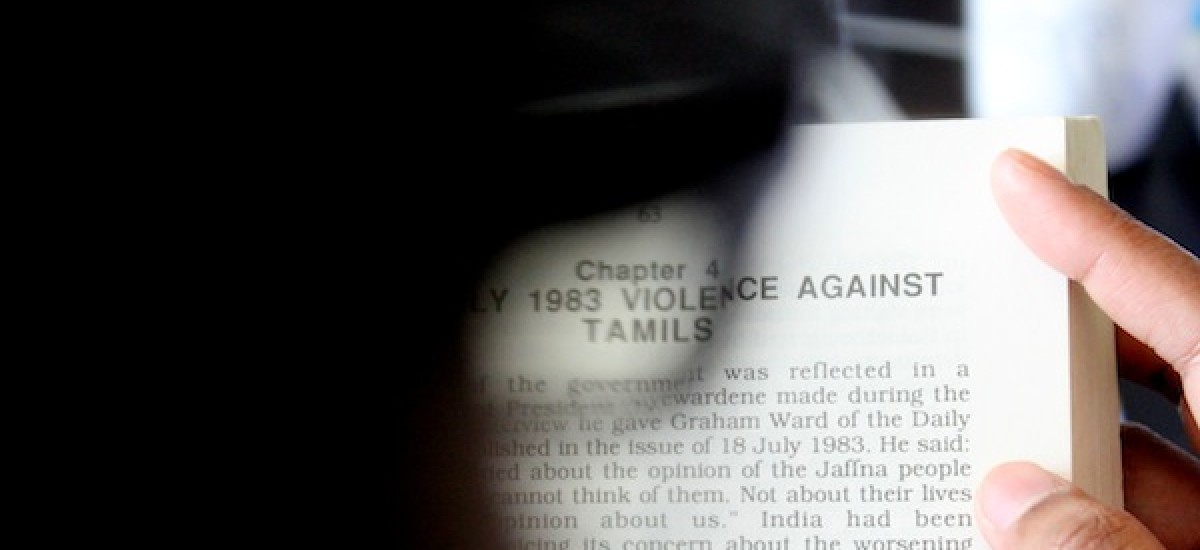
Photo by P. Vijayashanthan
The most vivid memory of violent conflict for me has been from July 23, 1983. I was 7 years old then, the same age as my twins today. Each time a word, something I read or hear takes me back to that day, the first image I see in my mind’s eye are white-streams from broken milk bottles on the black tarred roads, as my uncle drove us home from school. It was the longest journey back home and at that age there was no fear, only bewilderment.
Once I got home everything was absolutely quiet. There was no excitement, no apparent fear, just an absolute silence. I remember my grandfather untying our dog and letting her out of the gate. She ran like lightening and disappeared around the bend of the road. My grandfather locked the house and all of us, my grandmother, mother, aunt and myself walked out of the gate in whatever clothes we were wearing as if to visit a neighbour or walk up to the beach that was so close to our home. Instead my grandfather led us to an open area in front of a neighbouring apartment block and we stood there together, waiting. I don’t know what was going on in the minds of my family but it was at that point that I realised something was not right. We would have stood there for not more than five minutes when our immediate neighbour, a Malay lady, asked my grandfather what he was trying to do. He answered calmly, ‘We don’t want to be burnt down inside our home and if anything happens let it happen to all of us together out here in the open!’
In the days that followed we were hidden safely and taken care of. My grandparents stayed with a Sinhalese family and my aunt, mother and I with the Malay family; two families we will always remember with gratitude. Black smoke rose into the blue sky as houses burnt down Ramakrishna Road and on the other side of the neighbouring slums smoke rose from Dehiwela. Our area, ensconced between the Rudra Grounds and the slums, was cordoned off by the local boys who kept the thugs away pretending to ‘deal with the Tamils on their own’ but in reality protecting us from harm. Our dog had returned home a few hours later and waited for us to come back home, and to our lives.
In early 1984, my grandfather insisted that we leave for India until ‘things get better’ while he stayed back with our dog. Three years later we returned but things never got better; now 30 years later, I find myself many miles away, living a life in exile with my husband and twin children who don’t remember their birthplace, the homeland of their parents. But, I still remain hopeful!
###
Editors note: The author is part of a project, curated by Groundviews, that brings together leading documentary filmmakers, photographers, activists, theorists and designers, in Sri Lanka and abroad, to focus on just how deeply the anti-Tamil pogrom in 1983 has shaped our imagination, lives, society and polity.
The resulting content, featuring voices never captured before, marrying rich photography, video, audio and visual design with constitutional theory, story-telling and memorialising, has no historical precedent.
The project is an attempt to use digital media and compelling design to remember the inconvenient, and in no small way, acts of daring, courage and resistance during and after Black July.
Read more here.

